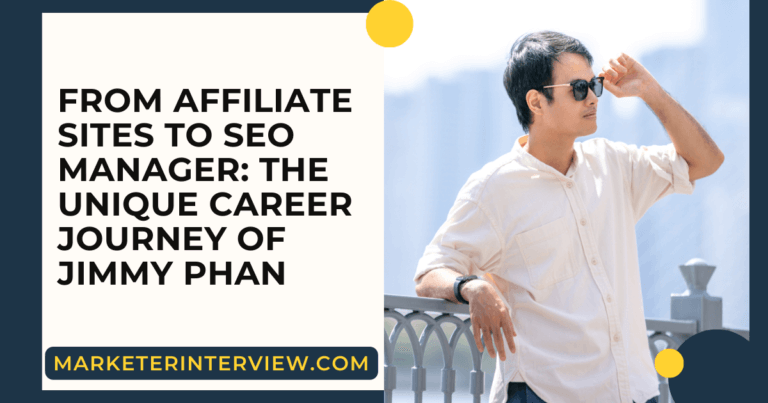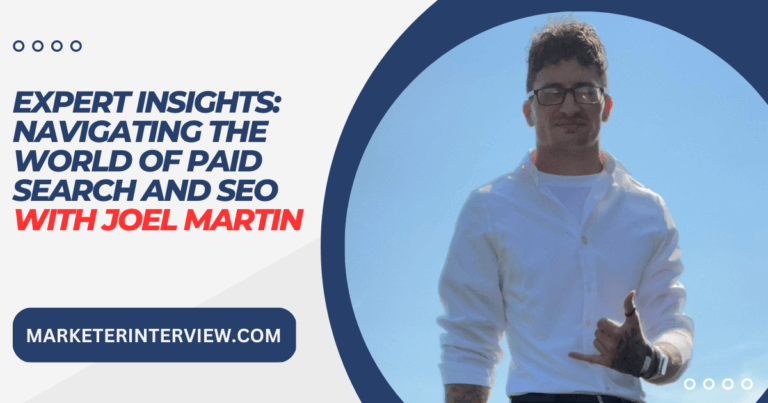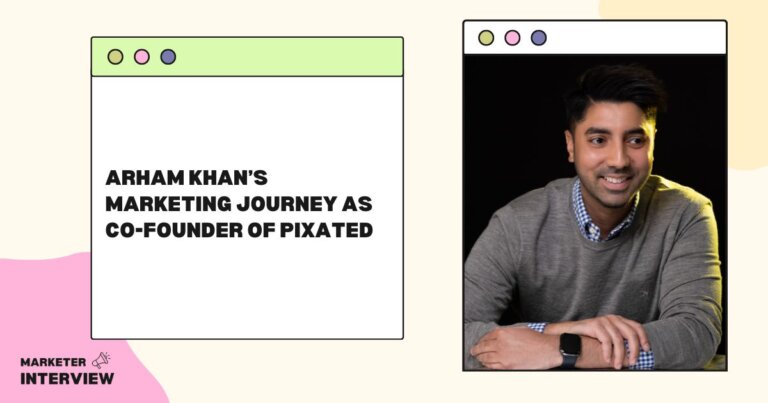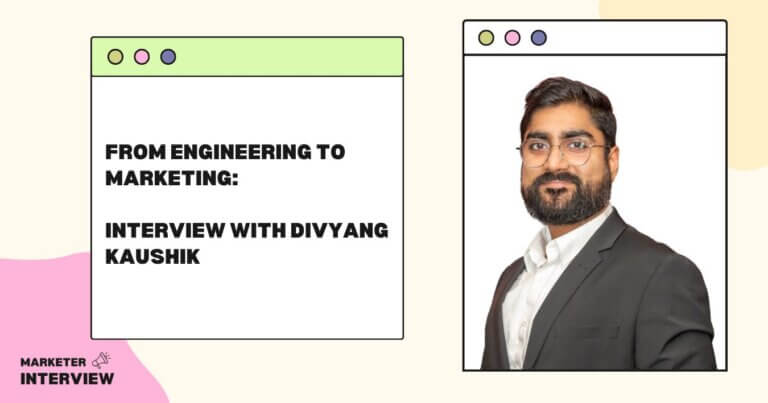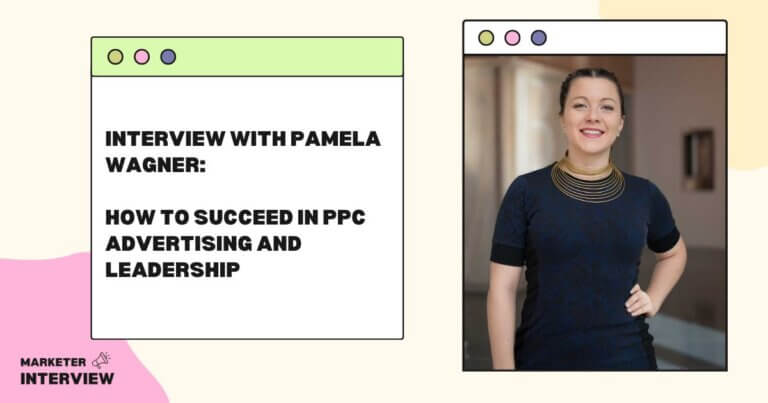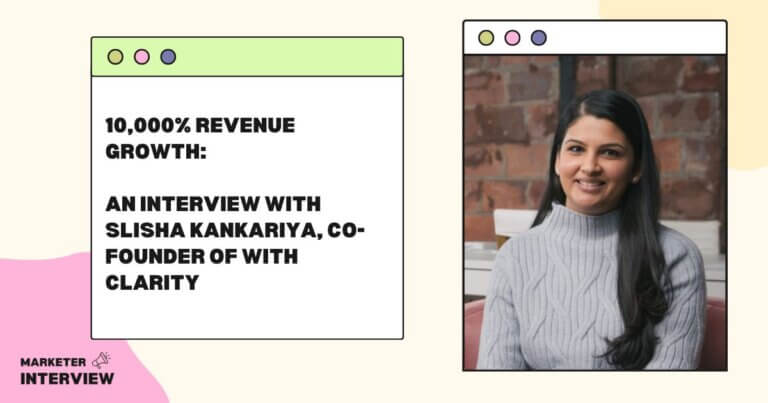PPC and Marketing Strategy: An Interview with Harry Burton
Welcome to Marketer Interview, where we delve into the minds of brilliant marketers who have significantly impacted their fields.
Today, we have the privilege of sitting down with Harry Burton, a seasoned marketing professional with an impressive track record in PPC, Marketing Strategy, and AI.
With over 15 years of experience as a freelance marketing and PPC consultant, Harry has honed his skills in crafting effective marketing plans and executing successful paid media campaigns.
As the Managing Director of Albion Marketing & Get Burton, Harry brings a wealth of knowledge and expertise. Join us as we explore Harry’s journey, insights into the industry, and valuable advice for aspiring marketers.
Contents
- 1 Can you tell us about your journey and how you entered the marketing field? What sparked your interest in this dynamic industry?
- 2 As a freelance marketing consultant, you’ve had the opportunity to work on diverse projects. Could you share a notable campaign or project that challenged you and how you overcame it?
- 3 What steps do you take when analyzing a business from the ground up, and how do you develop a unique position for their brand in the marketplace?
- 4 Please highlight some key factors you consider when profiling target customers. How do you ensure your clients’ messaging resonates with their intended audience?
- 5 What essential elements do you focus on while designing and executing successful paid media campaigns?
- 6 As the industry evolves, AI is transforming marketing practices. How do you leverage AI in your strategies, and what benefits have you witnessed through its implementation?
- 7 In your experience, what are some common challenges marketers face regarding PPC campaigns, and how can they overcome them effectively?
- 8 Could you share an example of how you foster collaboration and alignment among stakeholders to achieve optimal results?
- 9 With many marketing channels available, how do you determine the most relevant and influential ones for a particular industry or client?
- 10 Technology plays a significant role in marketing today. Can you tell us about the tools and software you rely on to streamline your work and maximize efficiency?
Can you tell us about your journey and how you entered the marketing field? What sparked your interest in this dynamic industry?
I grew up around Marketing and Advertising because my father worked in the industry, so from an early age, I was exposed to conversations and theories about it. My brother and I were even dragged into a few advertising campaigns as young children.
I’ve never considered anything else as a career because I’ve always been interested in the logical and creative side of the discipline. I love deconstructing a problem and developing a brand or campaign as the solution.
Even though I went on to study it at university, like most marketing professionals, I learned the most valuable things out in the field. You don’t learn how to write compelling copy or plan a digital campaign at university (probably because the industry moves too fast for a syllabus to keep up). You’ve got to be a self-starter and have a thirst to learn every day.
I suppose I’m naturally wired that way. You can’t study a lot of modern marketing tactics. You have to go and get your hands dirty. I taught myself SEO, how to code and how to launch and optimize paid media campaigns.
The internet is the best resource. If you want to learn something new, it’s all there for you.
There have been so many. Through years of trial and error and discovering what does and doesn’t work, I have developed my own blueprint for approaching marketing problems.
It starts at the foundational level – “Who is your target market?”. I run clients through the segmentation process, picking niches of prospects who can be particularly attractive to target.
This part of marketing is most important but so often overlooked. I encourage clients to look for segments that I describe as an inch wide but a mile deep – very specific in their characteristics and where there is a large number of them.
Then, the objective is to build a brand or product offering that appeals to them better than any other competitor. You need to talk to their needs, wants, and desires. We hang a differentiated message for the brand on an emotional factor they value.
A recent example is a client wanting to spin a new service out of their IT consulting business. Most of their existing business was in the corporate space, but they wanted to enter the SMB IT support market.
So we analyzed some target markets – industry segments they thought they could do well with and who might value their service more than others. Once we had identified the most attractive segments in terms of market depth, accessibility, and suitability, we needed to understand what emotional triggers weighed most in their decision-making.
I commissioned some market research, reaching out to potential prospects. We asked them what factors influenced their decision-making when choosing an IT support partner – asking them to rate qualities such as Security, Cost, Responsiveness, Productivity, and Friendliness, etc.; Responsiveness came up disproportionally higher than others. People just wanted their IT issues dealt with as quickly as possible – which makes sense right?
So we called the company Rapid IT. I wrote a statement of “strategic intent” for the business. From that point onwards, all business systems, processes, and decision-making should be about strengthening its position as the most responsive IT support partner in the market. We even created a service guarantee based on the speed of response. That brand promise then forged the company’s DNA.
In its simplest form, marketing is about picking your segments (broad or narrow) and positioning your brand (a meaningful and differentiated message). The communication tactics and combinations should then take care of themselves.
What steps do you take when analyzing a business from the ground up, and how do you develop a unique position for their brand in the marketplace?
To expand on my point in the last question.
I complete a segmentation exercise to identify buckets of prospective customers that a) could be particularly fruitful to serve and b) that the client can service particularly well. Ideally, they should be segments currently underserved by other businesses in the marketplace.
We then complete a profile analysis for the people or business profiles in the chosen segments. What do they care about? What drives their decision-making? What factors weigh the most for them? We try to uncover the evolutionary decision-making drivers.
We then work together to pick a differentiated idea for the brand/business. This is the unique selling proposition (USP), the position you occupy or claim in the market compared to all other competitors.
Good ways to differentiate your brand include emphasizing market leadership (only if it’s true, e.g., Coca-Cola), heritage/history (Rolls Royce, M&S etc), attribute ownership (safest, fastest, crunchiest, friendliest, etc., e.g., Volvo owns ‘safety’ in cars), market specialty (designed especially for particular niches,e.g., GymShark in gym sportswear) or how your product/service is made (e.g., Jack Daniels/Guinness/Papa Johns).
I’ll take the client I mentioned in the previous question as an example again. In their market, responsiveness was an attribute that the customer cared about, but no one else had claimed it yet. Many talked about security and being friendly and helpful, but no one shouted that they would fix your problem and you back in business quicker than you could blink.
The attribute you claim doesn’t have to be a unique concept itself. It just must be vacant and free to own in your market. Differentiation like this helps you stand out when prospects compare apples with apples. You become the orange.
Once you have defined your target market and decided on your unique message to that market, promoting your business is academic. You look to all the usual channels (SEO, PPC, Social, PR, Email, Events, Sponsorship, Direct, Telesales, etc.) that suit your market and refine/scale for those that deliver the best ROI.
Of course, you will need to think about your customer journey too. What creative assets or brand experiences can we introduce that strengthen your promise? What tools can be utilized to nurture leads into long-term customers? How can we install an effective referral program?
But once your basic philosophy is there, everything else is incremental gains of the infinite game of marketing.
Please highlight some key factors you consider when profiling target customers. How do you ensure your clients’ messaging resonates with their intended audience?
Key factors include segment size, accessibility, secular growth cycles, price sensitivity, trends, regulation impact, marketplace competitiveness, market saturation, scalability, etc.
You want to pick horses (segments) in good health, that have little or no existing competitors in the same space, and have decent long-term prospects.
Once you have identified your audience/s, you want to get under their skin. What do they look like? What do they think? What benefits do they seek? What emotional drivers most influence their decision-making?
I mentioned picking a differentiated position for the brand based on attributes that matter most to that target market. Find the one that matters most and build your brand identity around it. If it has already been claimed, pick another that can work (or question whether you can compete in that space).
You end up with your overall brand position, but you may tweak campaign messages slightly depending on the segments it is intended for. For example, suppose you are an IT company that services accountancy and legal firms. In that case, it makes sense to incorporate messaging about the different regulations their industries must adhere to or the types of software they each use. You’ll end up running individual campaigns with different messaging for each market.
Remember, good marketing is problem/solution-focused. Essentially you zone in on a problem that the target prospect might be having, present your product or service as the solution, and prove it with evidence of having previously fulfilled the promise for someone else like you, e.g., a client testimonial.
What essential elements do you focus on while designing and executing successful paid media campaigns?
Again it comes back to marketing fundamentals. You must match the right profile segment with the right message and solution. This is why targeted ad messaging, landing pages, and offers are crucial.
Paid traffic is becoming increasingly expensive. The margins for error are so slim now because there are so many people in the auction.
Many businesses don’t have the time or resources to run campaigns at a loss for 3+ months while the account builds enough data for actionable insight. The days of instantly profitable PPC campaigns are long gone (though exceptions still exist).
To be successful in paid media, you must polish everything through the chain. That means your brand, website and its UX, message and offer, data capture, prospect nurturing, etc. It is all critical.
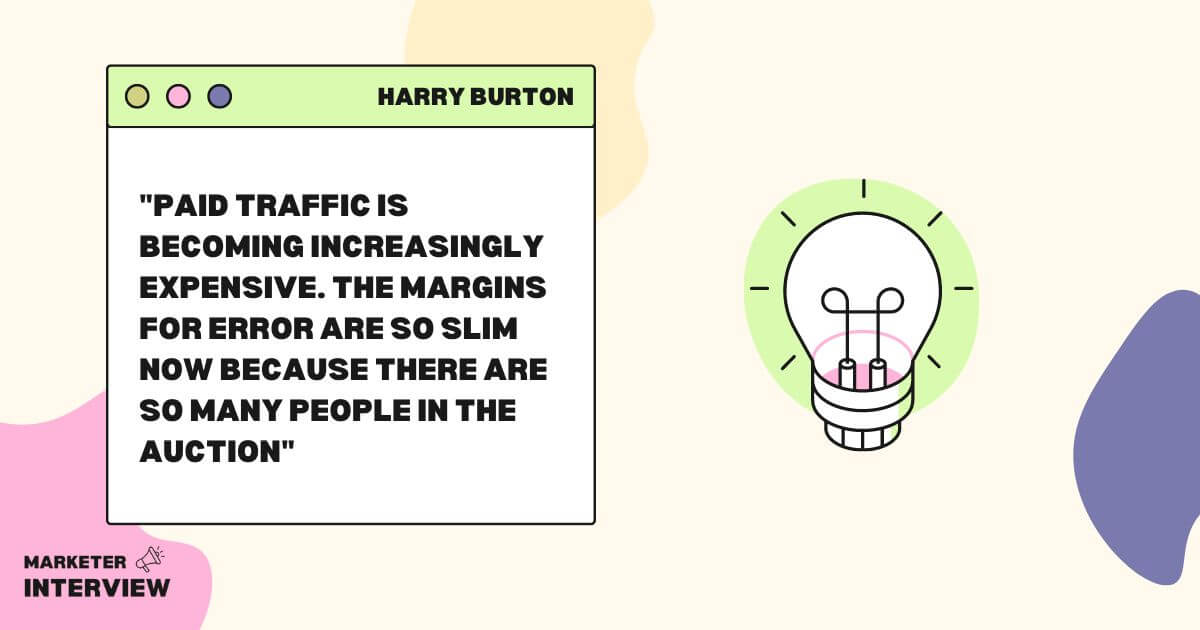
As the industry evolves, AI is transforming marketing practices. How do you leverage AI in your strategies, and what benefits have you witnessed through its implementation?
Machine learning has been around specific marketing channels for a fair while already. I mostly rely on it in PPC capacity – though that means trusting the Google or Meta algorithm to find better audiences, spin effective variations for ads, etc.
There are some other applications that I have tried – Chat GPT, Jasper, Designs.ai – but they only offer a little assistance to me personally. I’m sure I could find more shortcuts, but I am slightly old school. I know what a good copy looks like. I know what a good landing page structure is. I know good design when I see it.
AI tools are a source of inspiration or ideas rather than a finished solution. It can be a helpful time saver but is not the panacea for many fundamental marketing problems.
Businesses or individuals who rely on it too much will look too similar. To build a successful business, you must be different from the competition. And some of the best marketing ideas come from deeply irrational places that even computers don’t understand or can predict works (yet).
In your experience, what are some common challenges marketers face regarding PPC campaigns, and how can they overcome them effectively?
The main challenge is profitability. It has become an extremely competitive channel, and because of the auction model, it has become significantly more expensive. Lots of advertisers enter the arena and are prepared to burn cash for long periods before ever turning a profit.
It can sometimes be challenging to explain to clients that their campaigns may lose money for an extended time before we have enough data to make informed decisions.
And there are so many other variables that directly influence the performance of those campaigns too. Does their website offer a good user experience? Are the landing pages well-targeted? Do they have compelling calls to action (CTA)? Are there an effective means of data capture or a compelling offer? Do you have a professional-looking and trustworthy brand identity?
This is one of the reasons I specialize in brand strategy first. If you send paid traffic to a website, you must have all your other ducks lined up because things can get expensive fast. To be a good PPC manager, you must be a good marketer first.
Every market is also completely different. You must get under the covers to do an excellent job for each client. Dive deep. Use the product yourself. Wear the uniform. Understand the buyer journey and where your client sits in the competitive arena.
In my view, you shouldn’t even think about spending time, money, and relational equity on driving paid traffic until you’ve truly understood how your client’s offer connects with the target market.
Firstly, I always conduct a marketing strategy workshop with the client and their top decision-makers and stakeholders.
This runs over several days and gets into the fundamentals of their market and competitive position within it. We do a segmentation analysis and review the competition in context. The client knows their market better than I ever can.
Once we have dug out answers to the difficult questions (sometimes telling them things they don’t want to hear), I write a marketing plan. The output of this could include a complete brand revamp, a new website, new creative collateral, or specific sales infrastructure. If a brand redesign is required, I partner with some outstanding designers who help bring solutions to the challenge.
I believe paying £20k+ to an exceptional designer to create a polished logo, identity, website, collateral, and stationary assets is a drop in the ocean to the long-term benefit delivered.
Depending on the project’s scope, I may also bring in copywriters to help craft the tone of voice for the brand – which usually focuses on a core campaign message. Again, this is money well spent as it inspires and, in a collaborative setting, delivers fantastic ideas that would be difficult to uncover in isolation.
I believe in spending money in the right places – especially the small hinges that swing the big doors.
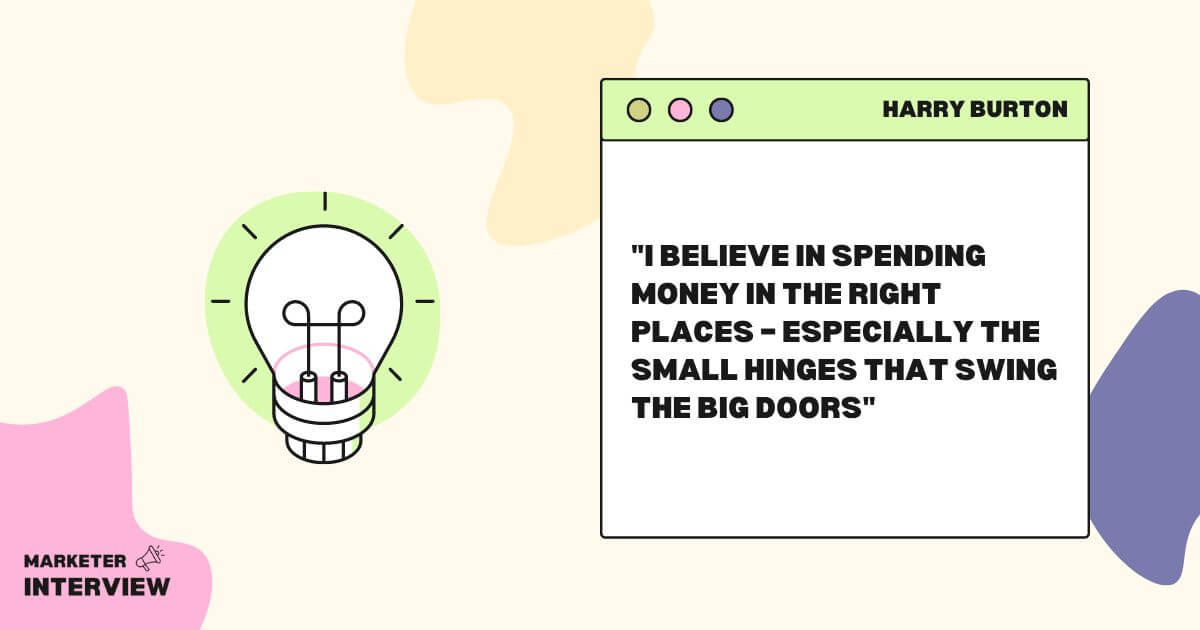
With many marketing channels available, how do you determine the most relevant and influential ones for a particular industry or client?
It is ultimately influenced by the nature of the target market, where they are, and how they like to buy. Other factors include typical sales cycles, long-term customer value (LTV), and customer acquisition costs (CAC). B2B and B2C markets heavily influence where to spend the budget best.
I use different marketing channels for different purposes. For example, Meta platforms are better for brand building/awareness, targeting people based on who they are (interests, demographics, etc.). In contrast, Google is focused more on what people are looking for or doing (when in buying mode). This will infer the messaging types and campaign types I use.
Outside of digital channels, advertising spend is influenced by where the prospects are most likely hanging out or what partnerships you can form (sponsorships, referral programs, affiliates, etc.) to reach them most effectively.
Technology plays a significant role in marketing today. Can you tell us about the tools and software you rely on to streamline your work and maximize efficiency?
Again, it varies from client to client. I have worked with all major platforms from a website CMS perspective but predominantly use WordPress, Shopify, or Magento for eCommerce.
For data capture and CRM, I use HubSpot and MailChimp. I use SEMRush and Mangools SEO tools for keyword research and backlink analysis.
I use Adobe Suite in design, particularly Photoshop, InDesign, Illustrator, XD, and Premiere Pro for web design and video editing.
As mentioned, I occasionally trial some AI applications for assistance or inspiration by relying on them sparingly.

